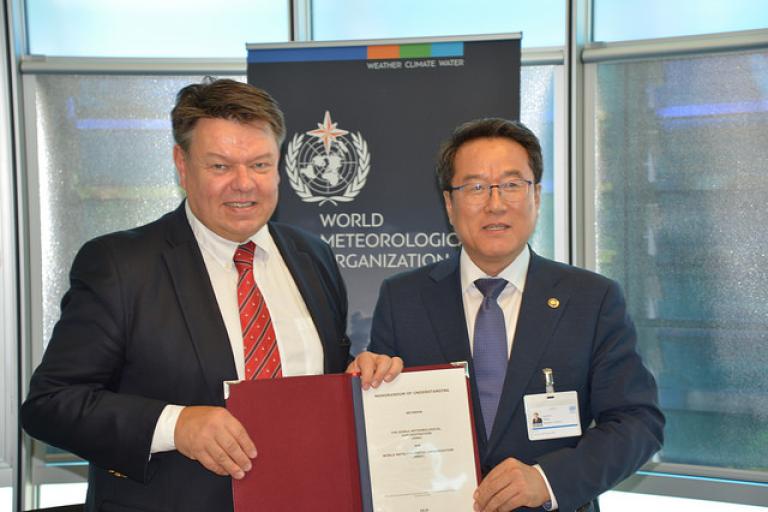KMA extends support for sub-seasonal to seasonal project

The Korean Meteorological Administration has signed an agreement with the World Meteorological Organization to host the International Coordination Office for the second phase of a project which aims to improve predictions at sub-seasonal to seasonal timescales.
Improved weather-to-climate forecasts promise to be of significant social and economic value, especially in agriculture and food security, water resources management, transportation and tourism to just name a few applications. This supports WMO ambitions towards seamless predictions from minutes to months as part of a wider vision for a comprehensive Earth System modelling and prediction on time scales from moments to decades which will lead to better, more reliable services to support policies and decisions..
An International Coordination Office for the sub-seasonal to seasonal prediction office has been based on Jeju Island for its first phase since 2013.
“It is five years since we launched the International Coordination Office on Jeju Island,” said Jae Cheoul Nam, Permanent Representative of the Republic of Korea to WMO. He said the second phase of the project would further promote training and workshops to increase the capacity of developing countries. “This is a good chance to cooperate with WMO towards the future of the project.”
The Memorandum of Understanding, which was signed by Mr Nam and WMO Secretary-General Petteri Taalas, is for the next five years.
The main aim of the sub-seasonal to seasonal prediction project, known as S2S, is to improve forecast skill and understanding on the sub-seasonal to seasonal timescale. From a science point of view, the project brings together the weather and climate research communities to solve the unique scientific challenges related to this forecasting time range.
From the end-user perspective, the sub-seasonal to seasonal timescale is critical to many areas such as climate adaptation planning, disaster risk management practices, and environmental stewardship of natural resources.
The International Coordination Office supports WMO to coordinate the planning and implementation of S2S activities under the scientific guidance of a Steering Group and assist in the cooperation between S2S and other relevant international programmes.
Mr Taalas said that he hoped benefits from the project would be used by the Korea International Cooperation Agency, which in turn would take advantage of the expertise of KMA.
- WMO Member:
- Republic of Korea










